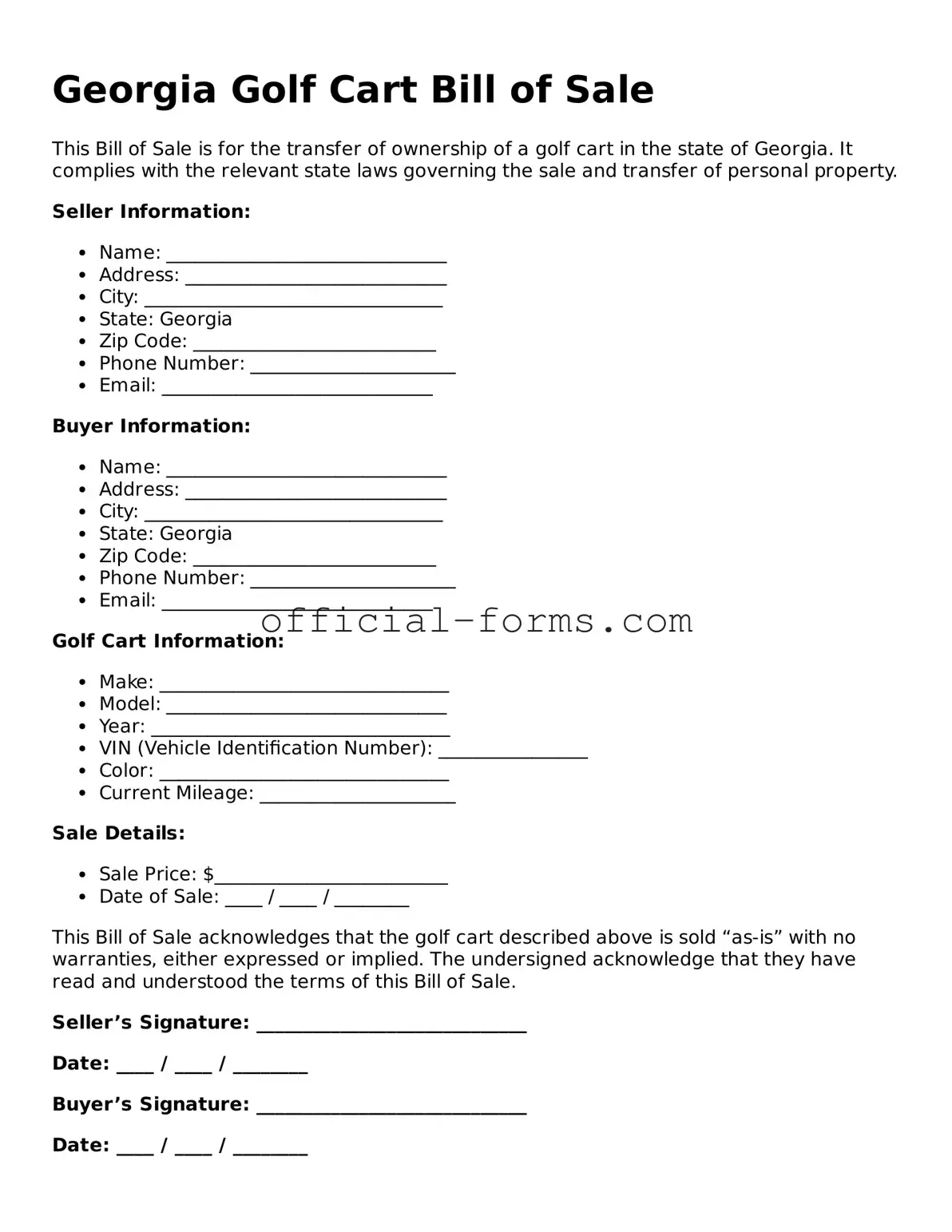Filling out the Georgia Golf Cart Bill of Sale form can seem straightforward, yet many individuals make common mistakes that can lead to confusion or legal issues. One frequent error is failing to include all necessary information about the buyer and seller. Both parties' names, addresses, and contact information must be clearly stated. Omitting any of this information can complicate future transactions or disputes.
Another common mistake involves not accurately describing the golf cart itself. Essential details such as the make, model, year, and vehicle identification number (VIN) should be included. If these details are incorrect or incomplete, it may create challenges when trying to register the golf cart or when verifying ownership.
Many people also neglect to specify the sale price of the golf cart. This figure is crucial for both parties, as it establishes the terms of the sale and can impact taxes and registration fees. Leaving this section blank or providing an ambiguous amount can lead to misunderstandings later.
In addition, failing to sign and date the form is a prevalent mistake. Both the buyer and seller must sign the document to validate the transaction. Without these signatures, the bill of sale may not hold up in a legal context, potentially leading to disputes over ownership.
Another error involves the lack of a notary public's signature, which is often required for the bill of sale to be legally binding. Some individuals overlook this step, thinking that a simple signature will suffice. However, having the document notarized adds an extra layer of authenticity and can help prevent fraud.
People sometimes forget to keep copies of the completed bill of sale. After finalizing the transaction, both parties should retain a copy for their records. This document serves as proof of sale and can be invaluable for future reference or if any issues arise.
Additionally, it is not uncommon for individuals to use outdated or incorrect forms. Ensuring that the most current version of the Georgia Golf Cart Bill of Sale is being utilized is essential. Using an outdated form can lead to unnecessary complications in the registration process.
Some individuals also fail to check for typos or errors after completing the form. Simple mistakes, such as misspellings or incorrect numbers, can create confusion and may complicate the transfer of ownership. Taking the time to review the document carefully can prevent these issues.
Another mistake involves not understanding the local laws regarding golf cart ownership and operation. Each county in Georgia may have specific regulations that affect how golf carts can be used and registered. Ignoring these regulations can lead to fines or other legal repercussions.
Lastly, individuals often underestimate the importance of providing a complete transaction history. If the golf cart has had previous owners, including this information can clarify the ownership chain and help establish the legitimacy of the sale. Failing to do so may raise questions about the cart's history and ownership status.
